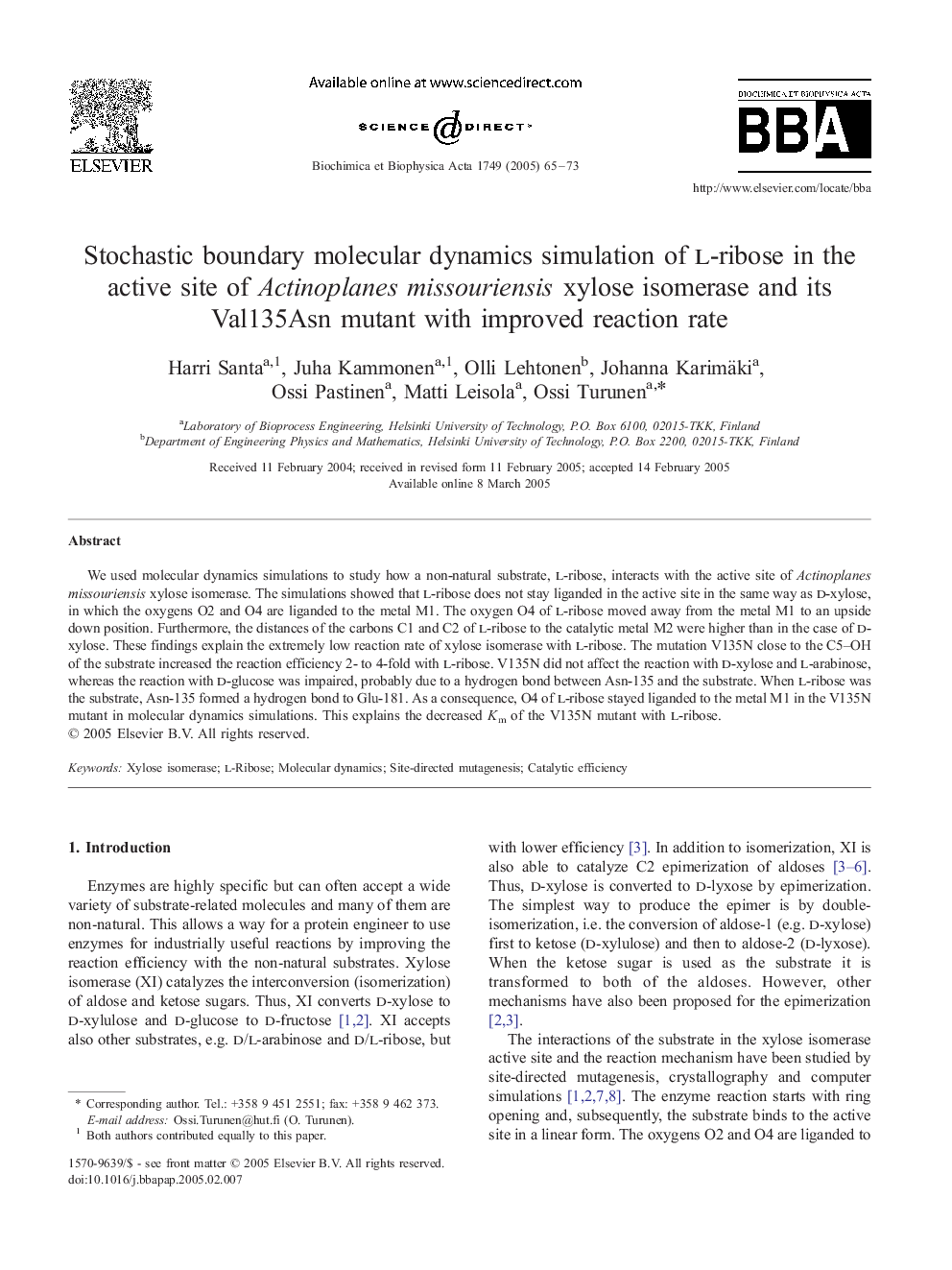| Article ID | Journal | Published Year | Pages | File Type |
|---|---|---|---|---|
| 10537957 | Biochimica et Biophysica Acta (BBA) - Proteins and Proteomics | 2005 | 9 Pages |
Abstract
We used molecular dynamics simulations to study how a non-natural substrate, l-ribose, interacts with the active site of Actinoplanes missouriensis xylose isomerase. The simulations showed that l-ribose does not stay liganded in the active site in the same way as d-xylose, in which the oxygens O2 and O4 are liganded to the metal M1. The oxygen O4 of l-ribose moved away from the metal M1 to an upside down position. Furthermore, the distances of the carbons C1 and C2 of l-ribose to the catalytic metal M2 were higher than in the case of d-xylose. These findings explain the extremely low reaction rate of xylose isomerase with l-ribose. The mutation V135N close to the C5-OH of the substrate increased the reaction efficiency 2- to 4-fold with l-ribose. V135N did not affect the reaction with d-xylose and l-arabinose, whereas the reaction with d-glucose was impaired, probably due to a hydrogen bond between Asn-135 and the substrate. When l-ribose was the substrate, Asn-135 formed a hydrogen bond to Glu-181. As a consequence, O4 of l-ribose stayed liganded to the metal M1 in the V135N mutant in molecular dynamics simulations. This explains the decreased Km of the V135N mutant with l-ribose.
Related Topics
Physical Sciences and Engineering
Chemistry
Analytical Chemistry
Authors
Harri Santa, Juha Kammonen, Olli Lehtonen, Johanna Karimäki, Ossi Pastinen, Matti Leisola, Ossi Turunen,
